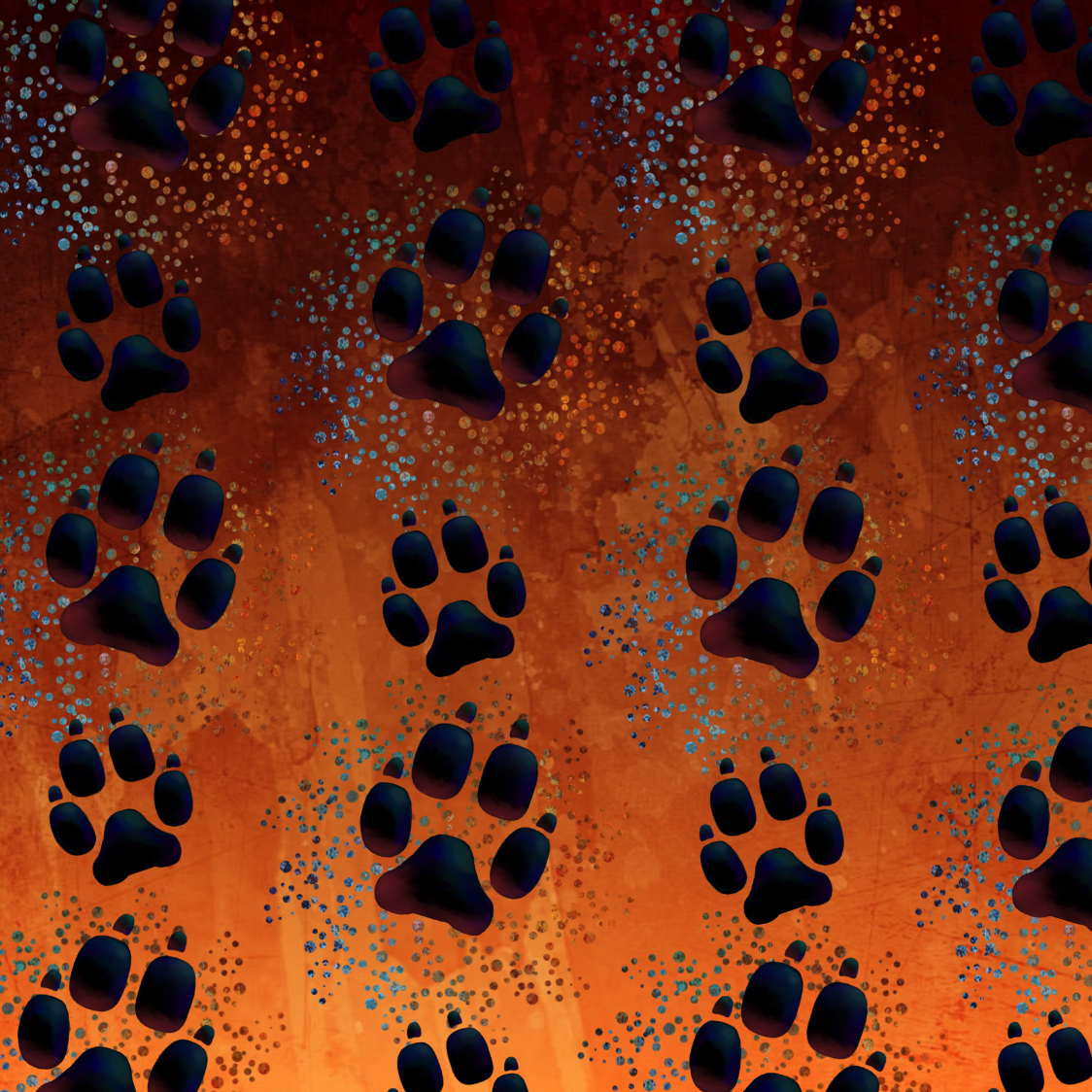
nolimit4paws@gmail.com
925.699.4410
PRIVACY POLICY - MEMBERS ONLY
Purchase required to use this site. In using this training site, you agree to the privacy policy: This is for member use only. Please do not share, copy, post, forward or otherwise distribute the link, URL address, or any of the material from this site without written consent from Limitless Pawsibilities. This includes the descriptions, infographics, photos, videos, video links, and all written material.
© 2023 Limitless Pawsibilities
All Rights Reserved
WWM Online Training Course
Welcome to Walking With Manners
What Is Walking With Manners?
Let’s start by defining what walking with manners really means. When you take your dog for a walk, what are your expectations? Everyone is different, so you need to decide what an enjoyable walk with your dog looks like. Once you have a clear idea of what you want, then it will be much easier to decide on a training path that will get you there.
When going for walks with your dog, you want to make sure it is enjoyable for BOTH you and your dog. A walk is not just exercise. It is a time to bond with your dog and to enjoy each other’s company. Once you know what you want in your walks, also consider what your dog wants (within reason). Each dog has their own set of favorite behaviors. Some love to sniff and sniff and sniff. Others like to mark. Some love to run back and forth, zig-zag, jump, and others want to just chill and enjoy the fresh air. The ones who love to chase, pull, lunge, or bark at things will need to learn to replace those favorite behaviors with ones that are more appropriate.
So get a clea picture in your mind of what you want your walks to look like, and then find the path you need to take to get there.
This online training course address the many aspects of walking with manners. It is divided into sections so that you clearly know where to go to reach your target for what you want in a walk with your dog. So, check out each section and see what amazing and fun training lessons and games will help you to reach your goals with your dog so that walks truly are a wonderful walk in the park.
Before You Begin
Congratulations on making one of the best choices in dog training - walking with manners. Walking with our dogs is a favorite dog-owner activity. It is a great way toprovide exercise and socialization. So then why do so any dogs have trouble with walks?
In this course you will be learning any strategies to help your dog handle a walk better so it can be more enjoyable for both of you. The spice of life is in the variety of activities you and your dog can do together. Your reltionship is the cornerstone to your dog’s behavior. Together, you dog will embark on an exciting and fun journey to get you on the right path to more enjoyable walks.
KNOWLEDGE IS POWER
Below is insider training knowlege to help you better understand how your dog thinks and learns. They are for your reference to help you better understand how to train your dog and get amazing results.
On this page - Key information to questions:
- What are training AKA conceptual games? What do you mean by concepts?
- What would you say is a big influence on successful recall? The Relationship...
- Why is prevention so important?
- What should I use for rewards?
- What is a reward experience?
- What equipment do I need?
- Do I have to use markers? What exactly are they? What about clickers?
- But you’re a trainer so your dogs are perfect. How will I get the same results?
- Distractions are already a problem from the moment I step outside. How am I going to do this?
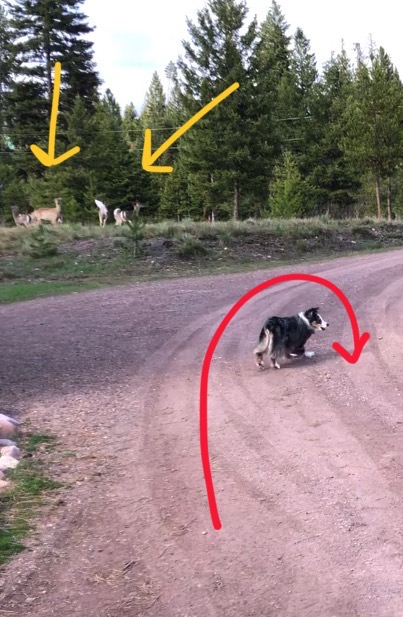
What Are Conceptual Games and Why They Work
What is dog training, and why is it important to you? Is dog training teaching your dog to do a simple behavior when you command it? Is it about teaching your dog cues: Sit, Down, Come, Stay... or is there more to it than that?
There is much more to learning than being told what to do. Your dog, beginning in puppihood, is making decisions and choices 24/7. An integral part of good manners is making good choices. Cues give you the ability to get behavior on demand. But what happens when you are not there? Will your dog still make the right choice when presented with more difficult situations, or when you are not around to cue it? Will your dog still make the right choice when things happen so fast you don't have time to cue? When you are dependent on cues, you are controlling your dog's behavior, instead of your dog learning how to control their own behavior.
Cues don't provide choice. Your dog has one option that is correct. What if that fails? What next? In actuality, cues are only a small part of dog training - the tip of the iceberg. There is so much more under the surface, and that is what you will be learning with me.
Games are flexible and allow a variety of behaviors to be “right." They provide fun in variety, just like life. Your dog's goal is to find joy in life, and you need to be a part of that. So does your training! Simultaneously, you also want to be teaching your dog how to make good decisions and how to handle the endless situations life will offer. This involves life skills, coping skills, and the ability to make a good decision quickly under various circumstances, even when you don't or can't cue it. This is what concept games address.
Every dog has their own personality, their own strengths and weaknesses. Their brain is pre-wired. Various parts of the brain control perceptions, emotions , and responses. But to handle life and to be a great human companion, certain aspects of the dog brain, and the concepts they contain, will need to be developed or boosted. They also need to have the abililty to override others. Temperament tells, but personality is fluid - it can be shaped and reshaped. Your dog will need to have particular skills in order to meet the challenges life will present. These skills are needed for walks, both on-leash and off. They are needed for recalls of all types. They are needed for good manners. They are needed to handle being outside and in public places. This is not just for service dogs or sport dogs. It is for all dogs!
Games shape the dog's brain and build life-skills:
- Relationship - value in you and "the team." You are more important than the environment or outside influences
- Confidence - abiity to handle new situations, trust
- Optimism - seeing the good in things, veiwing things in a positive way
- Flexibility - ability to adapt, change behavior, offer different responses in the same situation, go with the flow, work through anticipation
- Tolerance of Frustration - ability to work through difficulties and challenges, patience
- Focus - attention span, staying on task, eye-contact, check-ins
- Proximity - the value of being close to you, returning to you, choosing you over other things in the envrionment
- Orientation - turning towards you, disengaging from objects, engaging with you, checking in with you
- Impulse Control - holding back in the face of desires
- Disengaging - turning away from distractions, leaving a desire, stopping an interaction
- Engaging - to partake in activities with you instead of outside distractions, to engage with a specified object
- Dependence - looking to you for guidance and permission
- Independence - the ability to be alone, self-soothe and self-entertain, work alone without your help
- Listening - to hear you and follow your lead under various circumstances
- Calmness - to be calm even when there is energy to spare, to calm down quickly after or in between higher energy events, to remain calm when other exciting things are going on
- Grit - determination to work through obstacles and challenges, persevere
You will be getting numerous games to play with your dog that will build all of those concepts. You will do more than train your dog. You will be your dog's life-coach. Games are part of your everyday interactions with your dog. They are part of play. This is play with a purpose! If you make your games part of your life-style with your dog, you will see the amazing results they provide for your dog and for you!
The clip below shows you how orientation games and attention cues come together for an amazing recall.
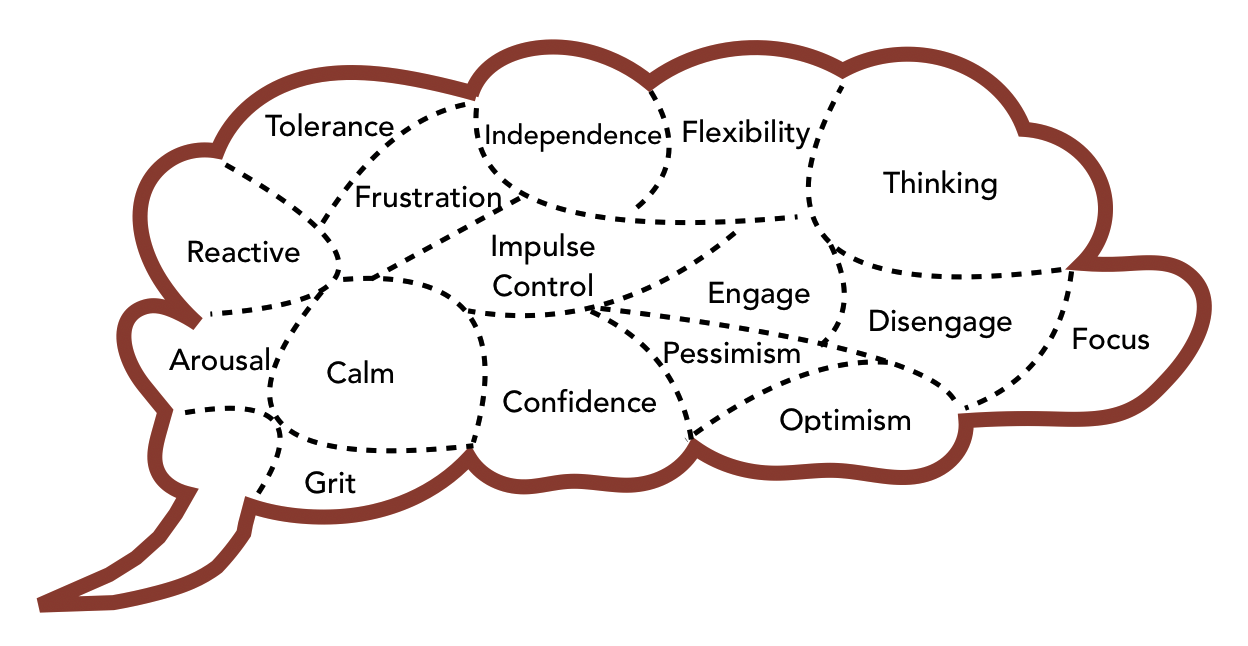
How Games Work
Every dog has their own personality. They have their own perception of the world, and their own strengths and weaknesses. Every dog is different and unique. The brain is a conglomeration of parts, each with their own function. These parts are comprised of concepts that shape the dog's personality, activate emotions, and direct behavioral responses.
Personality is fluid, meaning it can be influenced and molded. Through coneptual games and training, you can step into the learning process, take action, and shape or reshape your dog's brain. You can influence how the world is percieved and thus the emotions and responses attached. When you step into the picture, you can build concepts to help your dog better handle any situation.
The Dog Brain Process
Stimuli go into the brain to be processed. Every brain, when put into an ambiguous situation, creates an outcome. The dog's personality creates the outcome and determines how the stimuli is percieved and how the dog will respond.
Concepts are the building blocks of the brain.
- Each dog’s strength will vary in each concept
- Experiences also influence the propensity of a response to create outcomes.
- Your relationship is the glue that binds everything together.
Using Games to Influence Outcomes
Step into the picture and influence concepts and experiences to re-shape the brain and to change the outcome. Use games to achieve this by building specific concepts. Games are flexible and utilize the power of choice. Games will target various concept and strencthen them through the choices your dog makes while playing. Thisbuilds coping skills and teaches positive responses that transfer to real-life situations for better results.
- Games allow for multiple responses to be appropriate
- They allow the brain to mold and shape to a variety of situations and rehsape the brain to fit circumstances
- you set your dog up for success because you boost the necessary concepts outside of the triggers
- you insprie your dog, boost the relationship along with it, and provide the freedom of choice which is far more motivating than being commanded or told what to do.
Critical Concpets You Build Through Games
- Confidence
- Optimism
- Focus
- Impulse Control
- Flexibility
- Tolerance of Frustration
- Calmness
- Grit
- Engaging/Disengaging
- Think vs. Do
- Arousal up/Down
- Proximity
- and more!
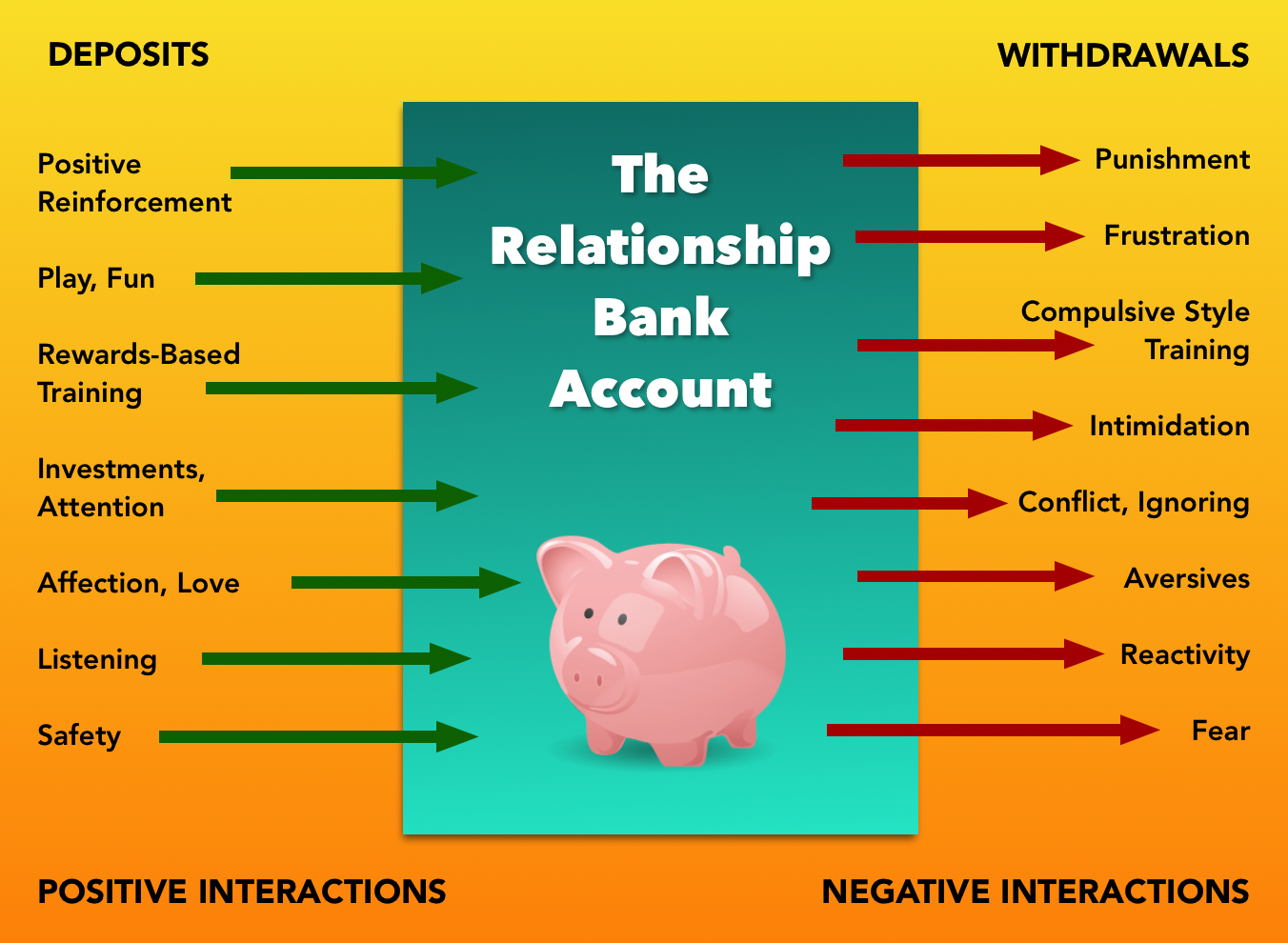
Relationship - The Most Influenctial Factor
The cornerstone of everything is rooted in your relationship with your dog. A relationship is a two way street. Both participants can contribute or take away from the relationship. Think of it like a bank account.
Positive Interactions: pay into the bank account
- Builds value
- Creates optimism and positive emotions
- Builds trust, boosts confidence
- Boosts the team
Negative Interactions: withdraw from the bank account
- Decreases value
- Diminishes desire
- Promotes pessimism, negative emotions
Your relationship greatly influences your dog, and can be a determining factor in a number of situations. It impacts how well your dog listens to you, and it also influences the decisions your dog makes. It is the glue that brings everything together: behavior, training, choices, trust, etc. And it is the safety net when certain struggles arise and other things might fall apart.
What Builds Trust?
- Consistency with rules and expectations
- Being proactive, not reactive
- Being firm but kind
- Listening
- Being fair
- Creating achievable goals
- Keeping your dog safe and knowing what that is for your dog
Relationship and Choices
Dogs are making decisions throughout the day, 24/7. Some are little - should I sit or lie down? Some are larger - should I remain calm or react? Some are appropriate, some are not. Just because you are not involved does not mean it is not happening. Change your perception when it comes to training - be a life coach! Get involved and help your dog learn to make good choices and better decisions. Put value in the ones you want.
- Focus on what you DO want, instead of what you don't want.
- Be proactive in your training instead of reactive.
- Intervene and redirect. Mold, shape, and guide your dog.
- Prevent rehearsal of unwanted behaviors and choices. Practice makes permanence!
- Teach proper decisions, rather than waiting and focusing on punishing unwanted ones. Dogs know best what dogs naturally do. Living with people means to change the way they think.
For any given situation, your dog has a number of choices to make. Dogs are driven by desire.
“All animals, except humans, know the ultimate reason for life is to enjoy it.” ~ Samuel Butler
Behavioral choices are made due to their ability to be successful in the situation. Place desire where you want it and build the value in the choices and behaviors you want. It is much easier to focus on a few choices you want, instead of the numerous behaviors you don’t want. Narrowing things down makes it much easier to focus your training.
When Working Through Struggles
- Tackle small triggers first - easy wins!
- Build optimism with things that are not triggers - easy wins!
- Work on parallel (similar) stimuli
- Build calmness in many aspects of real life - No response is a good response
- Invest - You! Build value between you and your dog
- Prioritize - Pick your battles. Small wins lead to big wins.
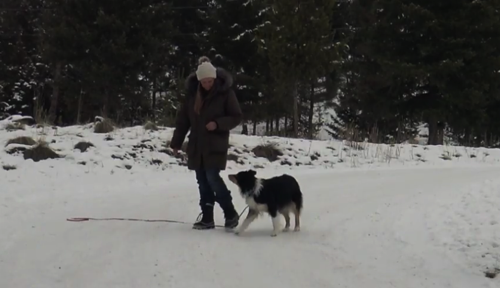
Prevention - Old Habits Die Hard
If your dog already has some bad habits, or if your dog has behaviors that make recalls super challenging, you are not alone. Yet, because of these factors, preventing your dog from continuing to engage in the undesired behavior is critical. Your dog can no longer practice those naughty behaviors. Practice makes permanent. So if your dog continues to do what you don’t want him to do, it will not stop. So, you might have to put your dog back on leash for all the walks to prevent chasing of any kind. You might have to leash your dog up to go outside period. Old habits doe hard, and you will need to be patient through the process of change. And speaking of change, you might eed to change some of your habits to in order for your dog to change his habits. Recalls are important enough to make those changes! It could save the ife of your dog one day. Recalls prevent dogs getting lost. Tools also prevent dogs from getting lost! So, until you and your dog have changed your ways and practiced recalls correctly and proofed the behavior, you will need to fall back on your tools to help your through the transformation - leashes, long lines, crates, ex-pens, fences, kennels… An ounce of prevention is worth a pound of cure!
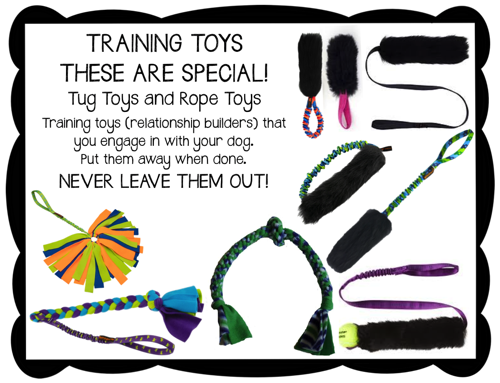
What Rewards Should I Use On My Walks?
Training walking with manners will oftentimes require high-value rewards. It’s a competition out there and you need to set yourself and your dog up to win. You have to find ways to make it worth it to ignore a distraction and stay near you. So what and how you reward matters. What you use for rewards will depend on your dog. Every dog has their own preferences. Some dogs are very foodie. Others would rather play tug or ball. It is up to you to know what your dog finds irresistible, and then you will use that during your walks. Your dog should never get it for free!
Praise and Pets
Some dogs just want the love. But if you are training or re-training walks on leash and want to use praise and affection, you can’t give it out for free. For praise and affection to be effective reinforcement, they MUST always be earned. So if you are like me and want to sometimes just cuddle and love on your dog, praise and affection will not be enough for all your walks. For the easy stuff it might, but when you are having to compete with a distraction, or if your dog already has bad habits, you will need to up your game and make it worth it to your dog. Never be stingy- pay your dog well for the behaviors and choices you want!
Food
I use super high-value food treats for my dogs with recalls. These are no run-of-the-mill dog treats. I pull out steak, chicken, elk, liver… These will be chosen over many other things in the environment. When using food, remember that you only have so much food you can feed your dog in a day. This is your dog’s daily allotment of food. You don’t want to pack on the pounds! The trade off is that your dog will be getting more food from your hand during recall games, and less food from a bowl. If I have to completely turn around bad habits, my dog will not eat from a bowl at all. Every bit of kibble and treats will be earned through games.
Training Toys
Toys are a wonderful reward for many dogs. I love that I don’t have to worry about calories with toys. The trick with toys is that they must be special ones. How do you make them special? They only come out when you are actively playing and training your pup, and they are put away when you are done. These toys are specific (Frisbee, tug style toys, tennis balls) and are never left out! Your dog only gets to play with them with you! The scarecity of these toys, the fact that they are never dead and boring on the floor, and they come out for exciting play with you is what makes them so enticing. Plus, toys can bring a level of energy and excitement that food can’t, which might just be the ticket to choose you over chasing the bun-bun! Use toys that are compact enough to fit in a pocket. Small tugs, foldable frisbees, and tennis balls on a rope work well for those dogs that just can resist a favorite toy.
Training Toys Tested and Approved by the Limitless Pawsibilities Team:
- Tug E Nuff tug toys (also available on Amazon) Our favorites are the WondaBaa Bungee and WondaBaa Powerball Bungee, and the Pocket Magnet. The toys usedin the toy training videos are Tug e Nuff toys, they just look a bit different because we are using “older models” than what you get today. I hand-make the fleece tug toys for my dogs, but you can also get a great braided fleece tug toy here with a bungee handle.
- The Hyper Pet Frisbee
- Kong Squeaker tennis balls (though the squeaker gets broken easily)
Other Rewards
Be creative and consider other things to be rewards. Behaviors can be rewards! Digging, sniffing, running, swimming, catching, fetch, even freedom. Chasing something that meets your approval can be a great reward for those chasie dogs. Even the distraction can be the reward when appropriate. Look at your dog’s value jar and understand what behaviors your dog loves to do and incorpate those into your tool box for a great reward experience. And always, praise and love should be part of your rewards.
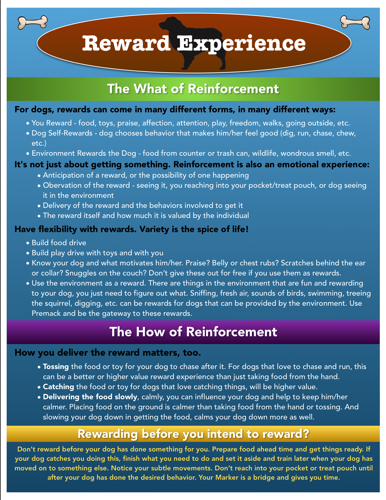
The Reward Experience
For dogs, rewards can come in many different forms, in many different ways.
- We Reward - food, toys, praise, affection, attention, play, freedom, walks, going outside....
- Dog Self-Rewards - dog chooses behavior that makes him/her feel good (sniff, run, chase, chew, jump, bark, whine, ...)
- Environment Rewards the Dog - seeing or greeting another person or dog, a passing car/bike/skateboard (movement), wildlife, wondrous smells...
It's not just about getting something; reinforcement is also an emotional experience.
- Anticipation of a reward, or the possibility of one happening
- Delivery of the reward and the behaviors involved to get it
- The reward itself and how much it is valued by the individual
These are factors that need to be considered when you are working with your dog.
Have flexibility with rewards. Variety is the spice of life, and that applies to your rewards.
- Build food drive and continue to use your dog's regular food as much as possible, saving treats for tougher circumstances.
- Build play drive with toys and with you, for play and toys brings a different element to your rewards, because it can be more exciting; higher in arousal. And this can be very helpful in busier, higher distracting, higher arousal type of situations. You can out-do fun and excitement with some fun and excitement of your own.
- Use the environment as a reward. Choose an activity your dog loves or giving your dog freedom are great rewards. There are things in the environment that are fun and rewarding to your dog, you just need to figure out what. Sniffing, running, swimming... can be rewards for dogs that can be provided by the environment. Your gateway for environmental rewards is Premack. Environmental rewards need to be put on permission so your dog doesn't just help himself. The environment can also be very tricky. It can reward your dog when you don't want it to, because just seeing something can be reinforcement enough for your dog (even though interaction never occurs). That is why working outside and in public places is a challenge and needs a lot of practice.
How you deliver the reward matters.
- Tossing the food or toy for your dog to chase after it. For dogs that love to chase and run, this can be a better or higher value reward experience than just taking food from the hand.
- Catching the food or toy for dogs that love catching things, will be higher value.
- Delivering the food by hand slowly, calmly, you can influence your dog and help to keep him/her calmer. Placing food on the ground is calmer than taking food from the hand or tossing. And slowing your dog down in getting the food, calms your dog down more as well.
So, when you are working with your dog, consider your goal: drive, excitement, momentum? Or lowering arousal, promoting calmness, or working impulse-control. It all matters.
My dog only listens to me when he knows I have food...
Everything you do matters when it comes to rewarding your dog. Preparing the food for a training session, if your dog is watching you, is a reward experience. It builds the anticipation of being rewarded. This is why your dog will listen well and follow you if you do this and then train immediately after. The preparation is part of rewarding your dog, and your dog is getting rewarded before he/she has done anything for you yet. This also goes for opening a crackling bag of treats, stuffing your pockets or treat pouch and attaching it to you. All of this is seen by your dog as a form of reward. Additionally, if you reach into your treat pouch or pocket before your dog does the behavior you want, you are also rewarding, and this can happen before your dog does the behavior depending on your timing, and can prompt your dog to listen and follow only if your hand reaches into the pocket first.
So what happens if your dog does not get this reward experience before working with and for you? Does your dog listen? Does your dog trust that you will offer payment for the work if partial payment, at least, is not received beforehand? This is a common problem that people run into. Building trust is important to the relationship. And you need to let your dog know that even when there is no proof a reward in the beginning, that listening and following your directions will result in payment, and just payment at that. Contrary to what some people believe, "My dog just loves to please me," dogs don't work for free. There has to be something in it for them. And unbeknownst to those who think differently and don't offer some sort of reward, they are inadvertently putting the behavior on and extinction schedule. It will go away over time. How long that will take depends on the dog and the situation.
So be aware of what you do and who is watching. Prepare food ahead time and get things ready. If your dog catches you doing this, finish what you need to do and set it aside. Training will happen some point later when your dog has moved on to something else. Notice your subtle movements. Don’t reach into your pocket or treat pouch until after your dog has done the desired behavior. Your Marker is a bridge and gives you time. What you do to begin rewarding your dog - reaching into your pocket or pouch, walking over to the bowl with food in it, praising your dog - are all part of the reward experience and count. Don’t get stingy with your rewards. When you are in the beginning stages of training, and during adolescence, rewards are important until you build enough trust and a strong relationship that a shift takes place and it is now about “the team.” This happens because of all the work and reinforcement you do from the beginning.
Equipment
You will need a variety of tools to teach a reliable recall. These tools help aid you in training and prevention until your dog understands the best choice is YOU!
Supplies:
- Harness
- 6-foot standard leash
- long line
- treat pouch
- the best treats ever! It’s about what your dog thinks is best!
toys - squeaky ball, tug toys, etc. (natural fiber tug toys work best)
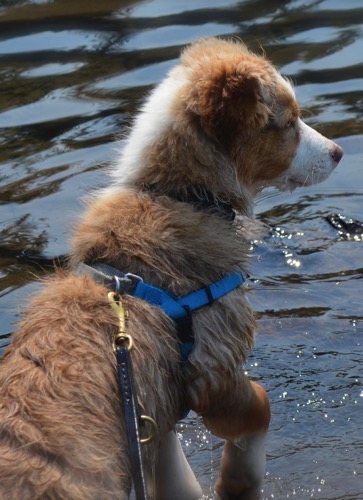
Harnesses
Using a standard buckle collar for walking is fine. If you would rather use a harness, which I highly recommend, here is some good information for you.
I like using harnesses best because nothing is attached to the neck, which is safer. When fitted properly, it is harder for a dog to slip out of a harness than a collar. Not all harnesses are alike. For a little puppy, just a soft and comfortable harness that clips on the back is fine. As your puppy grows, you will need to purchase a larger harness and one that is not only comfortable, but easy to put on, one that does not put undue pressure on the shoulders, and also has versatility and a good fit.
You have no idea what your dog might develop as far as behavior when out and about on a leash. Often times, pulling will occur at some point. Back clip harnesses don't help with pulling (and can actually give the dog leverage to pull), and even though as a puppy your dog doesn't pull, behavior can change with developmental stages. My recommendations for harnesses are at the bottom.
I use the Freedom No-Pull Harness with all my dogs. I've had this harness for a long time and have been very happy. It doesn't provide as much freedom of movement through the shoulders as other newer harnesses that are recommended below, but the numerous adjustment points give me options for a good fit and provides a dual-clip option (back and chest). I also like the slip loop on the back attachment which not only gives a tactile cue for pulling, but also helps to minimize the capability of a dog slipping out of the harness. If you fit your dog closerto the max range for the size mharness, the strap around the chest will be extended further out, and the chest straps that connect at the shoulder will be higher for better range of motion. Just a little tip, and why I recommend waiting until your puppy has grown a bit so you can optimize the fit of your harness.
NEVER usea slip collar (choke chain), prong collar, or e-collar (shock collar) on a puppy. These punitive tools can cause lifetime damaging emotional effects on a young puppy. There is talk about how harnesses can cause limited range of motion. And this is very true with certain styles of harnesses. They are not created equal!! I recommend you go with a double attachment harness that clips at the front and on the back, and a style that offers a freer range of motion through the shoulders. Here is a link to my favorite harnesses, including theone that I use with all my dogs (yes, I know 2 are from the UK).
Long Lines
I highly recommend having a long line as part of your training tools. It allows you to work cues and games at a distance, which is a different and more difficult picture for many dogs to work through while having the safety net of a leash to prevent or work through mistakes. Plus, it allows you to work in public places that are not closed in and still have control and keep your dog safe.
Long lines can truly make a difference when working more advanced levels of cues like recalls!
You can purchase a long line at many pet stores, on Amazon, Chewy, and various other dog supply sites. I like biothane long lines best - they are easy to clean and last a long time. You can get them at J&J Dog Supplies and Palomine.
You need to make sure to use safety when using a long line: always attach to a harness and clipped to the back of the dog, not the front. Make sure that you are stable and strong enough if you clip your dog to you or hold on to the handle- running dogs can easily pull you down when they hit the end of a long line (you can hook the line to something more sturdy). So be sure to use common sense!
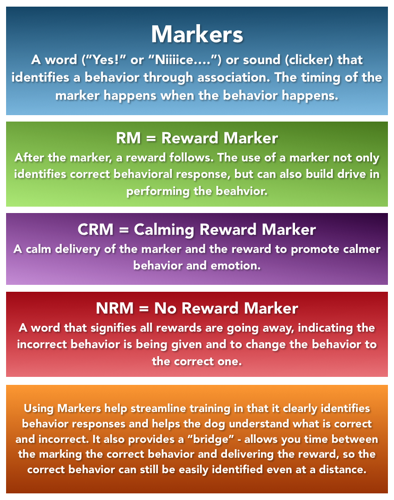
Using Markers
You will hear me use verbal markers in the training videos. A verba marker is a word that identifies a correct behavioral repsonse and that a reward is coming. Dogs that are familiar with markers key into these words and will offer behaviors in the hopes that they will hear the marker and get a reward. That is one reason that markers are powerful tools. They are also powerful in that they can promote drive in specific behaviors because the marker is an identifier of rewarding choices versus nonrewarding choices.
In this course, you will be using a verbal marker, because you aways have that with you! Bt there might be cases where you will want to use a icker for a marker. Clickers are very consistent and can mark a behavior very clearly with a single distinct sound. They are much more consistant than our voice that can vary in tone and intensity. Additionally, verbal markers can get mixed up with praise which can send a mixed message - praise is a reward, but what did the do do to deserve the praise? Was the behavior marked clearly so the dog knows?
What ever you choose, make sure that you get into the habit of marking the correct behaior so that you dog clearly understands exactly what you are asking for, and so they also understand that the effort is well worth it because you will invest in their choice and make it rewarding.
Reward Marker (RM) - I use Yes!” It comes out fast, easy, and is a natural repsonse for when my dog does something correct. You can use that, or choose something different. Make sure it is not a word that you use in praise. Also make sure that it is short so you can say it quickly during capturing moments that happen real fast.
My Dogs Are Not Perfect!
My dogs are dogs, just like any other dog. They have their own perosonalities; their own strengths and weaknesses; their own quirks. They can be naughty and make mistakes. You will see some of those mistakes in the videos. What really matters is how we respond those mistakes. Going back to kindergarten, or restarting from the basics is good practice. Prevention is another. Some mistakes mean that your dog gets put back on leash and loses freedom. That has happened to Echo, Doc, Goldie, CJ (Munchie), and Kia - so ALL of them! Fixing the mistakes by reflecting on why the mistake happened and making adjustments so the dog can be successful is best practice. My dogs will get rusty if I haven’t worked with them in a while. Life can get busy and teaching 6th grade can preempt dog training. It will show sometimes in the choices my dogs begin to make. At that point, I know I need to step it up and top off their skills. It falls on me! So, more so than anything else, it’s your mindset that will determine your success. Invest, reflect, and keep at it.
Once, when I was walking all my dogs together, two workers who were repairing the trail asked me, “Are they in training?” My response was truth, “Always."
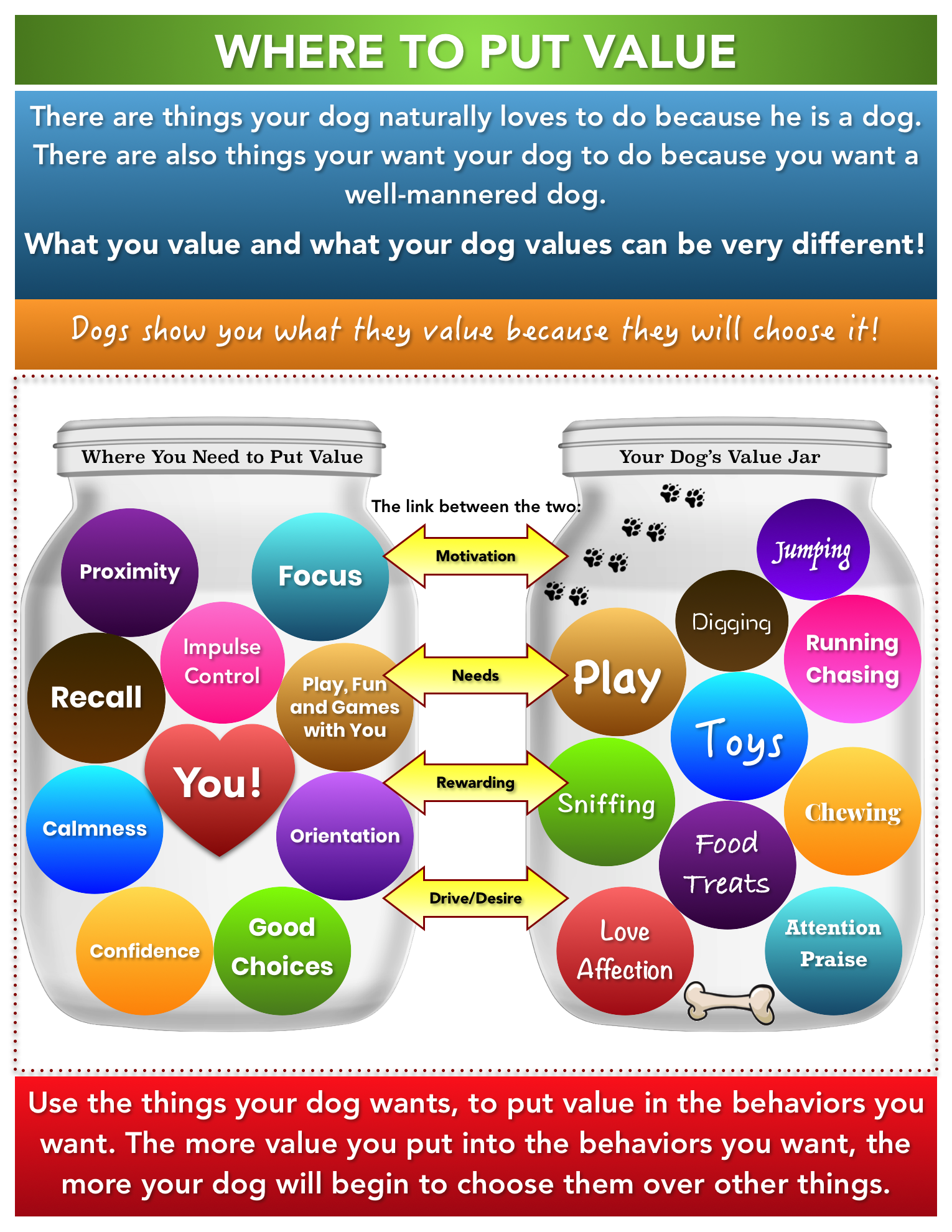
What is Value?
Dogs make choices based on what is valuable to them. What they like most is their first choice. So pay attention - dogs show you where the value is! Use this knowledge to your advantage. As you go through each day with your dog, be aware of thier choices in any given situation. This wi give you ideas on what your dog likes and loves and then you can apply this knowledge to your prevention and rewards plans.
You need to be the most valuable thing to your dog! That only comes from investing in your dog and being a part of all the wonderful things in your dog’s life. Place value in the things that are important to you, so that they become important to your dog. Reinforce foundation behaviors when they happen for real-life routines, and where you want them to happen — even simple behaviors like four on the floor and sit. Four on the floor for food from you is better than paws on the counter for food. Capture moments in time and reward your dog for good choices so that it will happen again and again, until it is automatic. Reward your dog with things he loves. Use food, use praise, use affection, toys, and play to your advantage.
Live in each moment with your dog. Notice the quiet, appropriate behavior and reward it. Dogs don't work for free, nor should they get the things they want for free. So reward well and build a ton of value in the behaviors you want now so that it is on default in the future.
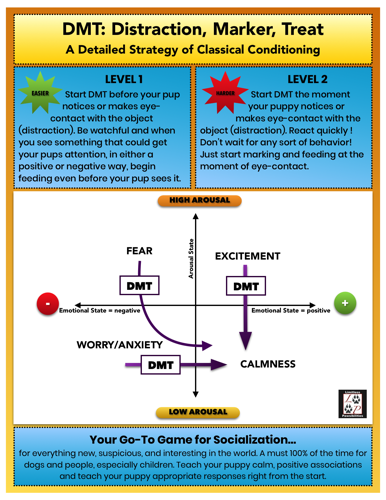
DMT - Distraction, Marker, Treat
Your First Game for Working Through Distractions
CONFIDENCE, OPTIMISM, CALMNESS, FOCUS, RELATIONSHIP, SOCIALIZATION
Keep it simple and work non-triggers first! It is for anything that your puppy sees as interesting. DMT is for everything with which you want your dog to have positive associations. It is for everything that you want your dog to be calm around. DMT is your go-to game when out and about, introducing your pup to the world. It is also for work at home, with visitors, sounds, and other occurrences you want your dog to get used to and learn a calm and controlled response.
DMT at Home
You can use DMT for visitors, helping to create positive associations with people coming into your home and help to promote calmness with visitors. That is also where you can use the "occupied" and "unoccupied" strategies of DMT. It involves using your crate, ex-pen, gate, or other boundary and teaching calmness and manners withvisitors. Occupied means that you give your pup something high value to chew with the arrival of guests, and periodically add in DMT when conditions change. Unoccupied means that your dog is in management/boundary and does not have something high value to chew on, and you will DMT the arrival. Occupied is easier and typically your first step to helping with calmness and positive emotions.
DMT Out and About (and Socialization)
It can be visual: cars, people, animals, objects, etc.
It can be or audio: barking dogs, engines or horns, people talking or cheering, animal sounds, construction sounds, etc.
Keeping Your Puppy Safe
You need to learn what makes your puppy feel safe andsecure. Only then can you build positive associations and confidence. Over-excitement can eaily shift to anxiety. Frustration can leadto fear. Proper socialization is not easy. It takes insightful observation of your puppy and learning how to read subtle cues. Going up to someone and sniffing them does NOT mean a dog wants to be pet. It does mean the dog is gathering more information to help him decide what to do next. Behaviors can easily be misinterpreted by people. So, proper socialization can also mean rejecting someone who wants to pet your puppy. But in the grand scheme of things, your puppy needs to trust you and that matters more than a stranger's wants or opinion.
FIRST THINGS FIRST: SPACE! - Space is of utmost importance. It keeps a dog safe, and it separates a dog from distractions. Be far enough away so your puppy feels comfortable and can focus on you, too. Far enough away so that your puppy can be more calm and relaxed.
BASIC LEVELS OF DMT:
- Level 1 - Pairing: When you notice, but your pup has not yet - mark and treat "no reaction is a good reaction." Continue through the entire experience with that distraction.
- Level 2 - Classic (classical conditioning): When your pup goes on alert and notices distraction but has not reacted yet, you say your CRM (Calm Reward Marker) and reward your puppy. At this stage, this is regardless of how your pup behaves. It is classical conditioning, a scientifically proven method, and at this stage in the game, you do not require any behavior. Hopefully, by catching things early, you will have the opportunity to reward "no reaction is a good reaction" by marking and rewarding no response.
- Level 3 - Transitioning (classical conditioning transitioning to a behavior): Your dog notices the distraction first, and you immediately begin DMT. Your dog is not acting out in any exaggerated way. That includes no barking, jumping, whining, growling, etc. but they might still not be behaving in an ideal manner. When you say your marker, your puppy turns to look at you. The marker helps your puppy to disengage from the distraction. It might be for just a moment and then the focus is back on the distraction, but DMT is starting to facilitate disengaging from the distraction and a calmer initial response.
With consistency, this creates a "habit" of turning/looking to you whenever something catches your puppy's eye. That is the automatic behavior you want to start seeing.
This technique limits eye-contact with distractions, interrupts emotion and reactivity, and turns your puppy's focus on you to be his/her emotional anchor.Your goal with DMT is calmness.
Releases or cues are to let your puppy know if it is okay to interact but only with permission. Management tools (leashes, crates, ex-pens, gates) are there to prevent rehearsal of unwanted behavior and to keep your puppy safe - avoiding going over to see something, sniffing, chasing, etc. Depending on where you live, curiosity can turn into a life-threatening situation (snakes, porcupines, trash, unfriendly dog, car, etc.)
